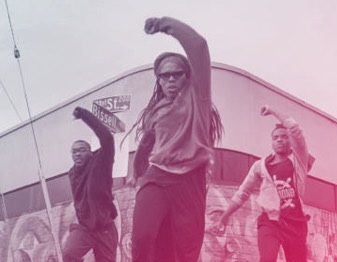LOW: One of the biggest faux pas of her career so far involved Weird Al, of all people. Al wanted to do one of his infamous riffs on “Born This Way,” so Gaga’s people asked that he record and submit it for Gaga’s approval. He did just that and it was rejected anyway. Weird Al didn’t take it lying down though and made a pretty big stink about it on Twitter, which started a Gaga backlash until her camp relented and said it was just a misunderstanding. Who knew our culture treasured Weird Al’s freedom to be mildly funny so much?
HIGH: Gaga recently visited Google headquarters and participated in an hour-long interview that showed the girl beneath the colored wigs and makeup, a girl who is far smarter than the other pop stars in the field, someone who has done her pop culture research and has a razor sharp wit to boot. Even the Google geeks ate it up.
LOW: Upon the release of “Born This Way,” a virtual cascade of Madonna comparisons flooded the internet. Many thought the new single was simply a rip-off of “Express Yourself” and took their outrage to the web, where it snowballed into general disinterest in Gaga’s new effort. But, in Gaga’s defense, we live in a time where almost everything has already been done so a familiar chord progression is bound to crop up in the pop music arena every now and again.

HIGH: Speaking of similarities with Madonna, Gaga, like the Material Girl before her, has embraced her gay fan-base. But Gaga is far more outspoken politically than Madonna was in her heyday, arriving to award shows with soldiers expelled under Don’t Ask Don’t Tell as her dates, rallying for marriage equality in Maine and New York, and so on. Some see it as pandering, but who are we to look a gift horse in the mouth? She arguably has the largest platform in pop culture and is using it to promote acceptance and equality. You can’t really argue with that.

LOW: Another mistake is her latest album cover. Shot by the photographer Nick Knight, Gaga is half-woman, half-motorcycle. She explains it as a visual representation of her being the vehicle for the voices of her fans and a force constantly moving in and out of fantasy or something convoluted like that, but it just looks silly. And that font is a Photoshop horror story. Not an image you want everyone to see before they decide whether or not to buy your album.
HIGH: But for every ridiculously bad look, there are twenty mouth-watering alternatives, like those seen below from various fashion and design magazines:




Now onto the music! Gaga’s special blend of avant-garde spectacle and unapologetic pop is alive and well all over Born This Way. The album starts off with a bang called “Marry the Night,” a ’90s dance song worthy of the Roxbury that takes a page out of La Bouche’s playbook and shows what Gaga does best. “Born This Way” comes next, an empowering anthemic response in the wake of gay teen suicides, a bullying epidemic, and inflamed anti-gay rhetoric from politicians and religious figures. Madonna comparisons aside, it’s a successful pop song that manages to work in every word in LGBT, which is no easy feat.
“Government Hooker” is the first song on the album that showcases the gritty industrial Eastern European sound that Gaga flirted with on her last EP, The Fame Monster. Gaga sings from the perspective of “the other woman” who slinks in the shadows behind a powerful man. “Put your hands on me, John F. Kennedy. I’ll make you squeal, baby, as long as you pay me,” Gaga sings as Marilyn Monroe; her tongue-in-cheek way of urging women to own their sexuality and re-appropriate the term “hooker.” It’s more or less successful as a song, but the message, while entertaining, is a little shaky.
The strongest songs on this album share this Berlin metal techno vibe. There’s “Bloody Mary,” a grimy beat-driven tale told from Mary Magdalene’s perspective, “Heavy Metal Lover,” a nasty number that would fit perfectly in an abandoned, crumbling warehouse, and, most successfully, “Scheisse,” which begins with Gaga admitting she can’t speak German but can try, if you like. She then proceeds to spit some German rhyme before returning to her native language to proclaim herself a “high-heeled feminist” and declare: “If you’re a strong female, you don’t need permission.”
A less successful foray into foreign language crops up with “Americano,” an extension of “Alejandro,” that fuses mariachi and flamenco for a supposed commentary on immigration. Unfortunately, the song’s production sounds contrived and obvious and the lyrics don’t really hold up to the intended message. This and a few other songs on the album (mainly “Hair,” which is built around the embarrassing metaphor: “I am as free as my hair!”) suffer from a lack of emphasis on songwriting that can best be expressed by the image below:

Misses like this make me wish Gaga focused as much attention on her musical output as she does on her general aesthetic. She’s proven that she can write a killer chorus and she’s got some great pipes, so it isn’t a question of whether she can, but if she will. The likely reason Gaga sometimes goes astray is that she seems to be surrounded by yes people who indulge her urge to realize every idea and impulse that pops into her head, whether it’s a bad one or not (see album cover again).









